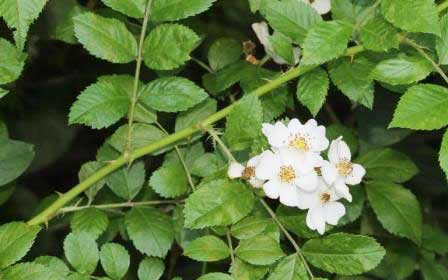Pignut Hickory (Carya glabra)
- Details
- Written by Jacob Schott
Family: Juglandaceae
The Pignut hickory is a common tree found throughout the eastern United States. Pignut hickory frequently grows on dry ridgetops and side slopes throughout its range but it is also common on moist sites.
It has alternate compound leaves comprised of (usually) 5 leaflets with the bottom two being slightly smaller. The color of the leaves is a dark green and the leaf surfaces have a smooth texture.
The nuts are relatively small and pear-shaped.



